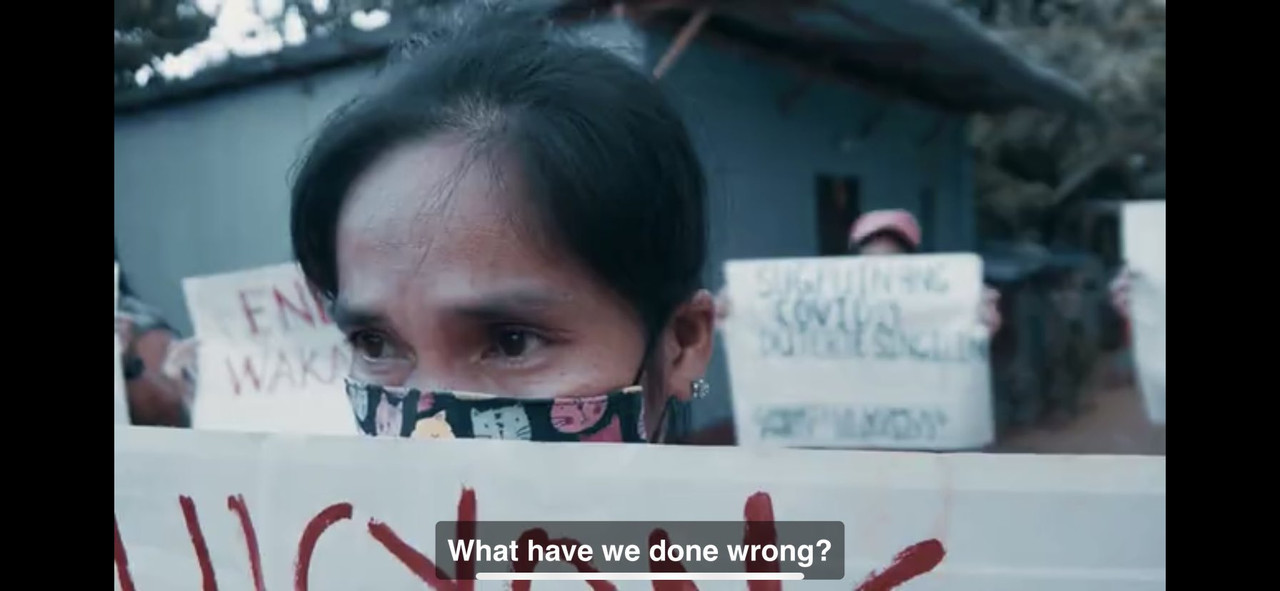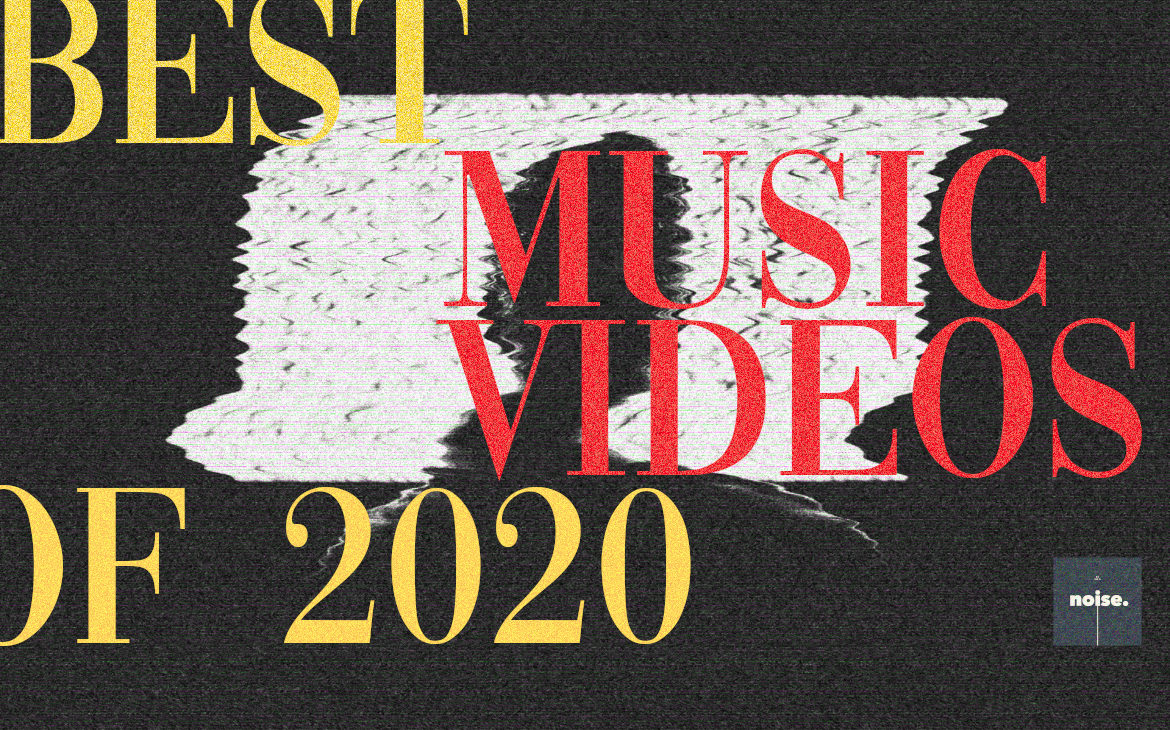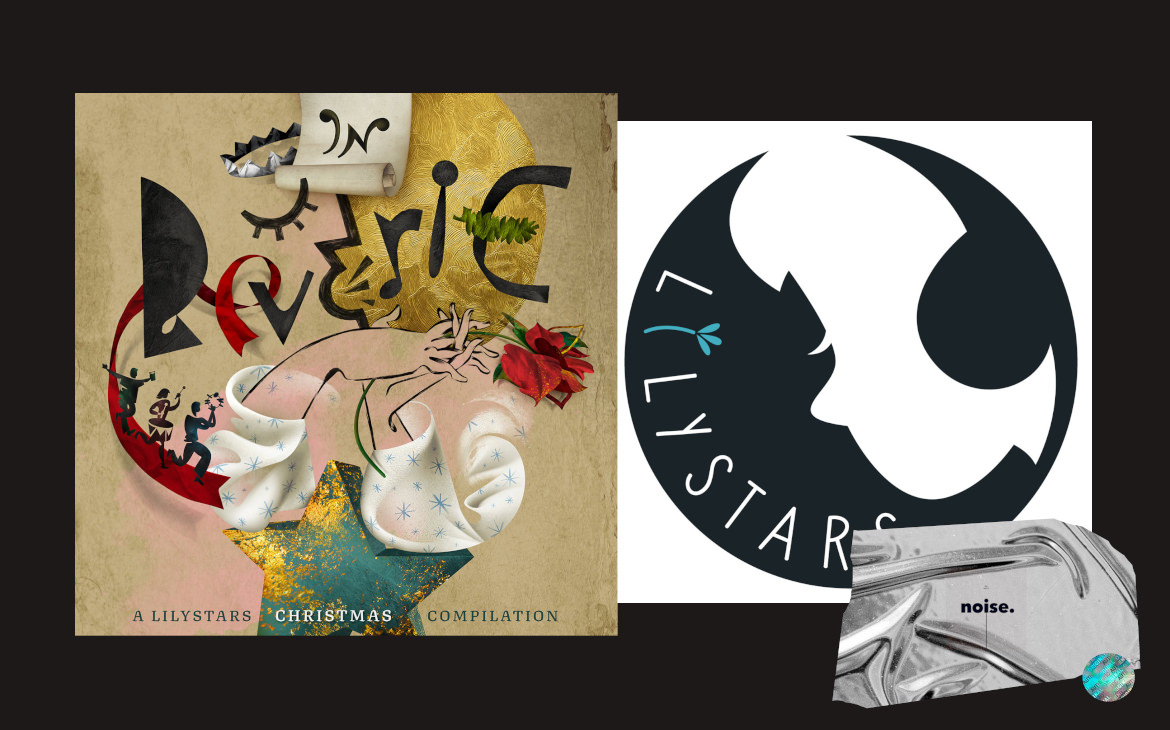By MC Galang, Jam Pascual, Aldus Santos, and Ian Urrutia
Not that production for every single music video on this list took place within the lockdown portion of 2020, but it’s kind of a miracle that we got music videos at all this year. No matter what kind of music video it is, they all have the same building blocks—a team of people coming together in a space to produce, direct, shoot, style and dress, and perform. That’s what making a music video is on a very basic level, and even that’s hard to do now. Still, we look forward to better circumstances, we take hella swab tests, we try.
So what do we see in the music videos of 2020? Some are lucid memories of physical gathering, a time still not far and away from us. Others exhibit unconventional production, making the most of new constraints. Ambient doom aside, a lot of these music videos are just purely, straightforwardly fun.
I’ve seen a lot of friends on social media wonder aloud why they’ve been having unusually vivid dreams as of late. It’s an anxious time. If you’re reading this, may these incredible videos—and the visions they hold—accompany you in the world of dreaming. Because what’s left to do but dream? — Jam Pascual
‘Kolo Kolo’ – Balming Tiger (KR)
Director: Pennacky
The best super Asian band of 2020, in my opinion, is Balming Tiger. With current membership spanning across East Asia, there is nobody else embracing pop deviancy unironically and with unnerving wit the way they do. Naming yourselves after a pain reliever ointment? Check. Paying homage to Asian film canon a.k.a the likes of Kung Fu Hustle? Check.
Its ingenuity is in its unflailing attempt to portray visual cues and references to Asian pop culture without turning them to non-dimensional caricatures and quick gags while keeping it extremely entertaining. — MC Galang
‘Dynamite’ – BTS (KR)
Director: Yong Seok Choi
Extolling BTS for anything at this point almost feels like a redundancy—their impact was undeniable, even before the release of their first all-English single. So the purpose of the “Dynamite” music video would seem to be to drive the point home for the unconverted, and it does so with aplomb. The colors! The dance moves! The boys’ ineffable charm! — Jam Pascual
‘Let’s Cry’ – DEPT (TH)
Director: Tung Pongpanich
The music video accompanying Dept’s electro-pop ballad “Let’s Cry” reimagines a world where crying is a crime, and people are trained to suppress vulnerability in order to conform to an established new order: a utopian, worry-free society defined by patriarchal constructs. Men and women are discouraged from showing their emotions, as if it were a sign of weakness. Those who refuse to follow the rules are punished and incarcerated. But there’s dignity in crying, and there’s power in breaking perceived notions of masculinity. In the final scene where the lead character is fed up with being controlled, he finally lets it out: the anger, the anxiety, and the uncontainable misery—feelings that legitimize humanity in an oppressive system that doesn’t allow it. He’s finally breaking free. And in that moment of rebellion and emotional honesty, he’s showing us what it means to be human. No one can take that away from him. — Ian Urrutia
‘Dune, Scatter.Persistence of Vision’ – downy (JP)
Director: Yousuke Asada
There is a ‘90s-style earnestness in downy’s video for “Dune, Scatter.Persistence of Vision.” In this, director Yousuke Asada’s chiaroscuro study, isolation and erasure—amid light, space, and motion (via Maika Fujii and Ryo Ikeda)—are central. It’s strange how a sort of nü-metal aesthetic looks fresh now, and for a wildly inventive post-rock/dark electronic Japanese act nonetheless. Feast on this Jonas Åkerlund-meets-Anton Corbijn mind-meld, if you haven’t yet. — Aldus Santos
‘Day’ – It’s Your Fault (TW)
Director: 郭晟禎
A cross between the languid pace of a Haruki Murakami plot (Cats! Food preparation! Mysterious characters!) and the vivid temperature of Wong Kar-wai’s oeuvre, It’s Your Fault’s “Day” fixates itself on mood more than anything else. A day drags out uneventfully, drama-free. Suddenly, incidental details take center stage. Negative spaces add tension. There’s just something about when the trivial becomes cyclical; when overlooked gaps eventually loom larger than the things we often ascribe meaning to, things we pay attention to. It becomes less about resolution and more about the act of going through it. Do we try to find meaning? Or just let it be? — MC Galang
‘Our Ballad’ – Hiperson (CN)
Directors: Sijiang Chen, Havoc Tang
Hiperson’s music video for “Our Ballad,” the lead single off their excellent 2020 record and Album of the Year contender Bildungsroman, is a stirring epic in and of itself: a coming-of-age tale heavily shaped by institutional foundations—to put it simply. The typical dynamics of external pressure (peers, parental expectations, blushes of romance) are overshadowed by something far greater in scale and beyond any one person. “I can’t say things as confidently as you do,” vocalist Sijiang Chen (who also co-directed the music video) sings in the chorus. That says a lot.
The video’s premise is unfussy, yet remarkably contingent to the song’s lyrical poetry: all members wear gray tunic—the Zhongshan suit (also known as the Mao suit)—as they dance stoically to the song loaded with subtle provocation. It’s a striking piece of work, even without the weight of history behind it; but especially with it. — MC Galang
‘Love Is Calling Me’ – Joanna Wang 王若琳 (TW)
Director: Robert Youngblood
In what seems to be another risky undertaking for a pop star of her caliber, Joanna Wang teams up with filmmaker Robert Youngblood in a music video that explores kitschy sci-fi romp and B-movie aesthetics. Interestingly, the visual narrative maintains a slight edge of weirdness and composure even when the song succumbs to emotional frailty: its soulful torch sounds reframed not with the usual sinister edge, but with a visual trademark of effortless cool. Think of it as a campy Guardians of the Galaxy remake, with Asian queer women getting a great deal of screen time. It’s that good. — Ian Urrutia
‘ひとつ’ – KOHH (JP)
Director: Havit Art Studio
I think it’s a shame to only know Japanese rapper KOHH from his verse in Keith Ape‘s “It G Ma” and not much else. His rawness as a hip-hop artist is poignant, whether in his high-octane or deadpan raps. Or, as with the case of “ひとつ” (One), when he sings—his cries reach an emotional crescendo: like a gutted boar wailing; whimpering as it dies.
The visuals (helmed by Havit Art Studio) capture KOHH’s anxieties as he contends with mortality—his views on the optimism of beginnings and the choices we make in life that dictate its ending—hoping his time on earth was spent as he wished: a life defined by kindness and empathy more than suffering. — MC Galang
‘Tonic Love’ – Mitsume (JP)
Director: Pennacky
It’s funny, because Mitsume’s kind of sunny, skip-in-stride indie, when you visualize it, lends itself very well to aimless walking. So Pennacky did just that for the “Tonic Love” video, except the walking’s not so aimless: it’s singular and purposeful, at times even subtly hilarious. Sprawling vistas and boundless horizons are interspersed with pocket visions of an insular suburbia and random encounters with strange creatures. In the end, the sleepy retrieval-and-rescue yarn becomes texture rather than focus. It’s pretty, and it’s pretty pointless, which is the Entire Point of It All. — Aldus Santos
‘White Rabbit’ – Nadine Lustre f/ Massiah (PH)
Director: Dominic Bekaert
In an interview with CNN Philippines, music video director Dominic Bakaert described “White Rabbit” as a song about “the star system and how one can become a prisoner of one’s image.” What separates Nadine Lustre from her contemporaries is that she neither subscribes to a particular mold nor panders to the whims of local showbusiness. She takes matters into her own hands, while shaping her own creative vision with reliable collaborators that think and act alike. The visuals of “White Rabbit” exudes this transition: from Nadine “giving herself permission to forge her own person” to finding her way out of the self-inflicted doubts and fears. In the end, Nadine realizes that the journey to realizing one’s worth doesn’t have shortcuts. It takes guts and courage to set one’s self free, and she does it fearlessly even if it might affect her commercial appeal as an actress and singer. — Ian Urrutia
‘Switchblade’ – NIKI (ID)
Director: Tom Teller
There is a certain mindfulness to the way NIKI invokes motifs of the celestial in her Moonchild Experience project as a whole, and they all come to a head in “Switchblade.” Cycles of the moon and activities of bioluminescent life work in tandem to reflect NIKI’s philosophy for being—to meet flux with flux, to engage the cosmos with a dynamic life. “The winds of change have nothing on this switchblade faith,” she proudly proclaims, before surrendering to a starlit freefall. Stay wild, moonchild. — Jam Pascual
‘Time Wrap’ – Perfume (JP)
Director: Yusuke Tanaka
Beyond its hyper-feminine sheen and melodic tapestry, Perfume has always been consistent in pushing the envelope of pop music. The three-piece J-pop group retains the familiar aesthetic values that made them an enduring fan favorite for almost two decades, while highlighting diversity in terms of songwriting and production. “Time Wrap,” their comeback single, is a return to form: a kawaii-inspired synth-pop jam whose vibrant visuals evoke a candy-coated interpretation of Kraftwerk’s retro-futurist sensibilities.
Halfway through the saccharine meltdown, the lovely trio rebels against the current trend’s obsession with maximalism and pitch-perfect branding. Their choreography aligns with the production design’s congruence in proportion and color; as a result, they blend splendidly in the background rather than become a clear standout. With the rising tide of K-pop content online, the music video of “Time Wrap” doesn’t let up either, and finds its genuinely independent voice amidst the sea of assembly-line pop from both sides of the globe. — Ian Urrutia
‘Family Portrait’ – Piman Sly (TH/ID)
Director: “Book” Chavit Mayot
Aggro djent and drag don’t always hold hands, but not in “Book” Chavit Mayot’s clip for Piman Sly’s “Family Portrait.” It’s a heartening gesture and a potent statement, and one that shouldn’t be overlooked. Make no mistake: close your eyes and Py Muenprasertdee’s guttural growling and Iman Ismail’s agile drumming still take the cake, but being shown something that says something doesn’t hurt one bit. — Aldus Santos
‘Bad Friend’ – Rina Sawayama (UK/JP)
Director: Ali Kurr
The plot for Rina Sawayama’s “Bad Friend” music video is surprisingly straightforward despite the single’s lyrical nuance: dejected salaryman (played by Sawayama) goes to a bar, over-friendly stranger accosts salaryman with way too many drinks, fistfight ensues. Director Ali Kurr effectively condenses the narrative of “Bad Friend” (closeness, then rupture, then regret) with this simple storyline. I wish I could say something about how interesting it is that the MV’s black and white noir treatment, which is normally accompanied by sad sax and lounge piano, is enlivened by the single’s synth pop sound. But really, the true highlight is seeing Sawayama absolutely slay in a suit. — Jam Pascual
‘Broken Glass’ – She’s Only Sixteen (PH)
Director: Mark Mendoza
She’s Only Sixteen is not exactly known for being cryptic. Even with imagined conversations or scenarios, their songs reject laboring over nuances. I suspect it has to do with hurriedness, often with a stride of recklessness permissible in youth but not so much when you’re an adult and your screwups are no longer yours alone to suffer consequences for. It’s unavoidable to break things along the way but hey, at least your mess is out in the open. Director Mark Mendoza’s animated video for “Broken Glass” spills out this mess palatably: bright colors, surrealist exteriors, Escher stairs—it’s the dance-along isolation anthem for this clusterfuck of a year. — MC Galang
‘Mish Mosh’ – Shirebound and Busking (PH)
Director: Carlo Fajada
A couple of years on and Iego Tan continues to simultaneously confound and conflate. Always a distinct cadence, never a facetious word thrown in. He’s not one for jagged, Bullet Dumas-style rhythms, but neither will you hear him laze around in both melody and lyricism. “Miss Mosh” is proof of this and is in fact—as the accompanying video will attest—a sort of montage, a mish-mash if you will, of the creative idioms of the times. It’s also wistfully memoirist in the best possible terms, both the tune and the Carlo Fajarda-helmed clip. — Aldus Santos
‘Candlelight’ – Sunset Rollercoaster f/ OOHYUK (TW/KR)
Directed by: DQM
Diving deep into the communal and personal tragedies of a fictional city ravaged by a calamity, Sunset Rollercoaster’s new album, Soft Storm, widens the scope of the band in terms of tackling bigger narratives that define the current socio-cultural moment. If the first single “Candlelight” is an indication of what we can expect from Sunset Rollercoaster’s conceptual release, then listeners are in for a treat.
The sound and scope are bigger in every sense, from the shift to sprawling and life-affirming statements about coping, grief, disassociation, and reformation to embracing stylistically ambitious greyness that distances itself from the more pop-informed anthems of 2018’s CASSANOVA. This time, at least on “Candelight,” both Sunset Rollercoaster and OOHYUK of South Korean band HYUKOH deconstruct familiarity to rebuild something that is both outsized and essential—a bold, risky move that feels more like a natural progression and not a calculated attempt at artistic relevance. Its music video says it all: poignantly detailed and not settling with just building the atmosphere of a typhoon’s aftermath, but also taking into account a nuanced portrait of a community grieving with the loss of family members and friends. — Ian Urrutia
‘Ano Ang Aming Kasalanan?’ – The Axel Pinpin Propaganda Machine (PH)
Director: JL Burgos
So, earlier this year, Rico Blanco released “This Too Shall Pass,” a song dedicated to the nation’s medical frontliners, whose music video was made mostly of shots of deserted cityscapes and relief effort clips. The intentions were pure, but the song and accompanying video felt like vapid gestures, empty assertions of optimism that seemed to push the tired narrative of Filipino resilience. Think of “Ano Ang Aming Kasalanan?” by The Axel Pinpin Propaganda Machine as the diametric opposite of that. An onslaught of harrowing shots and quick cuts make clear what we should make of this national crisis: a systemic problem caused and perpetuated by an incompetent government and its malicious police force. — Jam Pascual

Watch the music video here
‘悪戯’ – Tricot (JP)
It’s just a hoot watching Tricot cinematically reference Psycho, The Blair Witch Project, and The Texas Chainsaw Massacre while jovial math pop plays in the background. For some reason it works, watching singer and guitarist Ikumi Nakajima bust out hooks and riffs in a bloody bride gown. By playing semiotically fast and loose, Tricot’s video for “悪戯” (Itazura) is able to put horror and fun together to make something cheeky and catchy. — Jam Pascual
‘More and More’ – Twice (KR)
Directed by: Kim Young Jo
Twice’s “More and More” marks another high point in K-pop’s blindingly glossy production and signature visual appeal. The brightly colored take on bohemian paradise is a massive treat, while the pop group’s tightly choreographed moves and overall charisma leave music fans wanting for more. Twice’s slickly unique style easily outpaces their competition by a mile, and the music video of “More and More” just further cements their magnetic sense of tightness as a group. And boy does it take us to the swoon-worthy K-pop hits of the past, from 2NE1 to Girls Generation: a bop that has “modern classic” written all over it. — Ian Urrutia
Zild: “Habulan”
Director: Daniel Aguilar
What can be said of Zild’s runaway solo debut that hasn’t been said yet? In Homework Machine he is his own man, and that man, incidentally, isn’t him at all. This perhaps is at the crux of said record: this sense of constructed reality and avatarship, all of it almost exclusively hinged on chiptune arrangements and 8-bit graphics. The consistency is compelling, whether it’s in Shaira Luna’s styling; the crude-by-design animation by Keo Mendoza, Johanna Zurria, and Dioncilio; and Daniel Aguilar’s editing and direction. Which is to say you can interchange the song (and to an extent the video) with another from Homework, and it wouldn’t be some dumb, careless accident. — Aldus Santos







